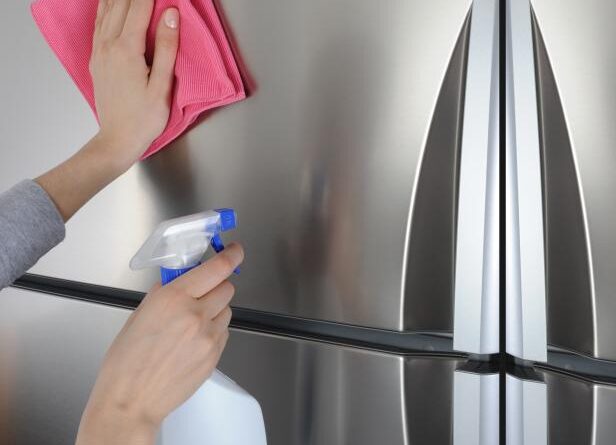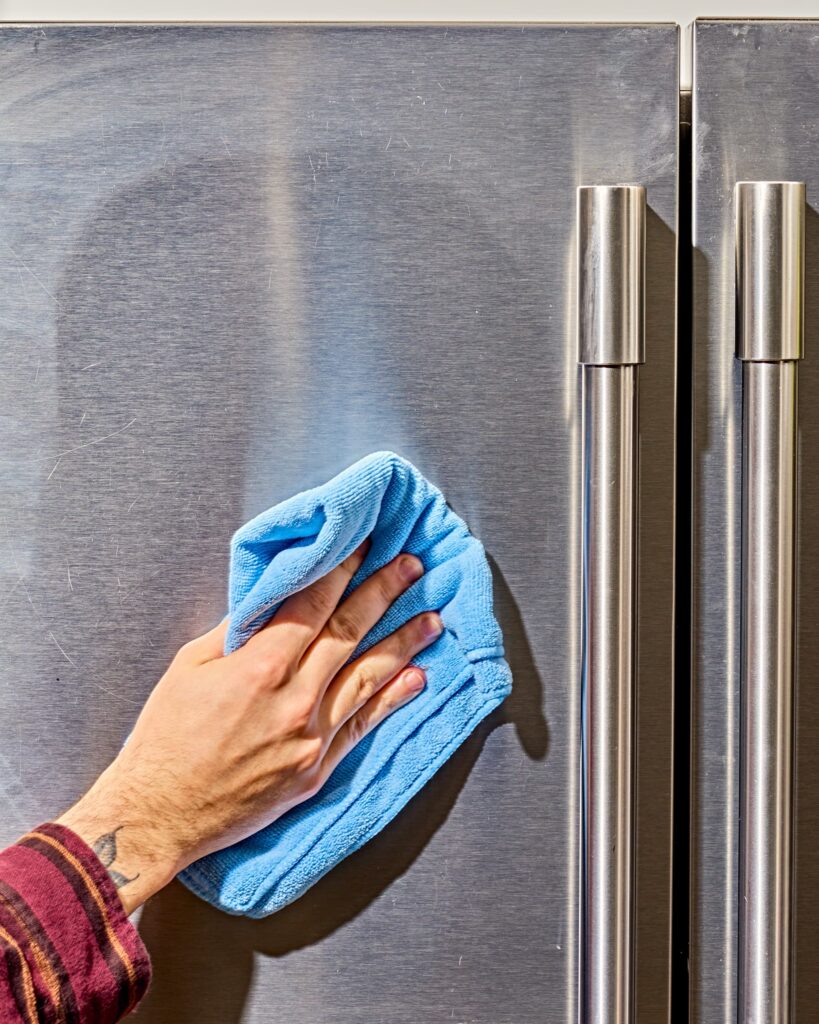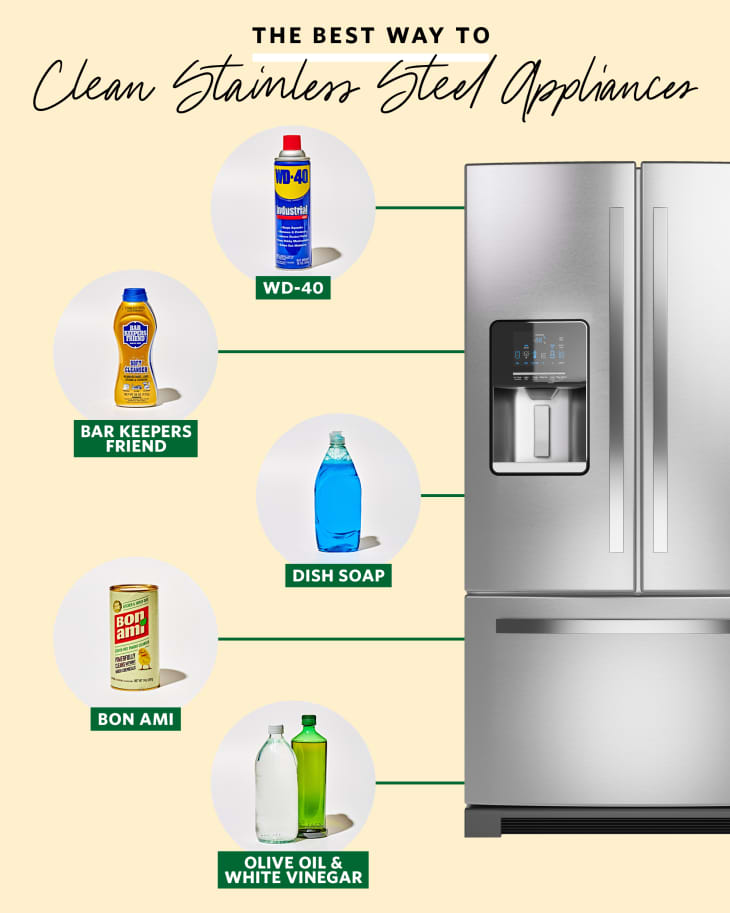
Are your stainless steel appliances losing their shine? If you’re wondering about the best way to clean them and restore their gleaming appearance, look no further! In this article, we will explore some simple yet effective methods to keep your stainless steel appliances looking brand new. Say goodbye to smudges and fingerprints, and say hello to a sparkling kitchen.
1. Understanding Stainless Steel
What is stainless steel?
Stainless steel is a durable and versatile material commonly used in the manufacturing of appliances and other household items. It is made from a combination of iron, carbon, and other elements such as chromium, which gives it its corrosion-resistant properties. Stainless steel appliances are popular due to their sleek and modern appearance, as well as their ability to resist stains and fingerprints.
Benefits of stainless steel appliances
There are several benefits to having stainless steel appliances in your home. Firstly, they are highly resistant to rust and corrosion, which ensures their longevity and durability. Secondly, stainless steel is easy to clean and maintain, making it a practical choice for busy households. Additionally, stainless steel appliances are also heat-resistant and can withstand high temperatures without warping or discoloration. Lastly, the smooth and non-porous surface of stainless steel makes it hygienic and resistant to bacterial growth.
2. Common Mistakes to Avoid
Using abrasive cleaners
One of the most common mistakes people make when cleaning stainless steel appliances is using abrasive cleaners. These products can scratch the surface of the stainless steel and damage its protective layer, making it more susceptible to stains and corrosion. Instead, opt for non-abrasive cleaning solutions that are specifically designed for stainless steel.
Using bleach or ammonia
Bleach and ammonia are powerful cleaning agents that should never be used on stainless steel appliances. These harsh chemicals can cause discoloration and pitting on the surface, damaging the stainless steel. It is important to choose gentle cleaning solutions that are safe for use on stainless steel.
Using rough scrubbing tools
Another mistake to avoid is using rough scrubbing tools, such as steel wool or abrasive scrub pads, to clean stainless steel appliances. These tools can leave scratches and permanent marks on the surface. Instead, opt for soft cloths or non-abrasive sponges to gently clean and polish the stainless steel.
Leaving cleaning solution residue
Leaving cleaning solution residue on the surface of stainless steel appliances can lead to streaks and a dull appearance. It is important to thoroughly rinse the stainless steel after cleaning and wipe it dry with a clean cloth to remove any residue. This will ensure a streak-free and shiny finish.
3. General Cleaning Tips
Gather necessary supplies
Before starting the cleaning process, gather all the necessary supplies. This includes a microfiber cloth, mild soap or stainless steel cleaner, warm water, vinegar, baking soda, and olive oil or mineral oil. Having these items readily available will make the cleaning process more efficient.
Read the manufacturer’s instructions
It is important to read the manufacturer’s instructions for your specific stainless steel appliance before cleaning. Different appliances may have specific cleaning recommendations or restrictions. Following these instructions will help prevent any damage and ensure the longevity of your appliances.
Prepare the stainless steel surface
Before beginning the cleaning process, prepare the stainless steel surface by removing any loose dirt or debris. This can be done by simply wiping the surface with a dry cloth or using a vacuum cleaner with a brush attachment. Removing debris beforehand will make the cleaning process more effective.
4. Everyday Maintenance
Regular wiping with microfiber cloth
To keep your stainless steel appliances looking clean and shiny on a daily basis, it is important to regularly wipe them down with a microfiber cloth. This will remove any dust, smudges, or fingerprints that may have accumulated. Wiping in the direction of the grain of the stainless steel will help maintain its polished appearance.
Using mild soap and warm water
For regular cleaning, a mixture of mild soap and warm water is usually sufficient. Simply dilute a small amount of mild soap in warm water and use a soft cloth or sponge to gently clean the stainless steel. Be sure to rinse thoroughly and wipe dry to prevent water spots or streaks.
Drying and buffing the surface
After cleaning with soap and water, it is important to thoroughly dry and buff the stainless steel surface. This can be done using a clean, dry microfiber cloth or a soft towel. Buffing the surface will help remove any remaining streaks or water spots, leaving a shiny and polished finish.

5. Removing Fingerprints and Grease
Using vinegar and water solution
Fingerprints and grease can easily accumulate on stainless steel surfaces, making them appear dull and dirty. To remove these marks, a simple vinegar and water solution can be used. Mix equal parts of white vinegar and water in a spray bottle and spray the solution onto a soft cloth. Gently wipe the stainless steel surface in the direction of the grain to remove fingerprints and grease. Rinse with water and dry thoroughly.
Using dish soap and baking soda paste
For tougher grease stains, a paste made from dish soap and baking soda can be effective. Mix a small amount of dish soap with baking soda to form a paste. Apply the paste to the stained area and gently scrub with a soft cloth or sponge. Rinse with water and dry thoroughly to remove the paste residue.
Using specialized stainless steel cleaners
There are also specialized stainless steel cleaners available that are specifically designed to remove fingerprints and grease. These cleaners can be found in most home improvement or appliance stores. Follow the instructions on the cleaner and use a soft cloth to apply and buff the product onto the stainless steel surface. Rinse with water and dry thoroughly.
6. Dealing with Stubborn Stains
Removing rust stains
Rust stains can occur on stainless steel appliances, especially in humid environments or where the stainless steel has been exposed to moisture for prolonged periods. To remove rust stains, make a paste using baking soda and water. Apply the paste to the stained area and gently scrub with a soft cloth or sponge. Rinse with water and dry thoroughly. If the rust stain persists, there are also rust removers specifically designed for stainless steel that can be used.
Removing hard water stains
Hard water stains can leave unsightly marks on stainless steel surfaces. To remove these stains, a mixture of vinegar and water can be used. Fill a spray bottle with equal parts vinegar and water and spray the solution onto the stained area. Let it sit for a few minutes, then gently scrub with a soft cloth or sponge. Rinse with water and dry thoroughly.
Removing burn marks
Burn marks can sometimes occur on stainless steel appliances, especially if they come into contact with hot pots or pans. To remove burn marks, make a paste using baking soda and water. Apply the paste to the affected area and gently scrub with a soft cloth or sponge. Rinse with water and dry thoroughly. For more stubborn burn marks, a stainless steel cleaner specifically designed for burn marks can be used.

7. Polishing and Restoring Shine
Using vinegar and olive oil mixture
To restore the shine and luster of stainless steel appliances, a mixture of vinegar and olive oil can be used. Mix equal parts vinegar and olive oil in a spray bottle and shake well. Spray the mixture onto a soft cloth and gently buff the stainless steel in the direction of the grain. This will not only restore shine but also help to prevent fingerprints and smudges.
Using commercial stainless steel polish
There are also commercial stainless steel polishes available that can be used to polish and restore shine. These polishes are specifically formulated to remove smudges and fingerprints, as well as protect the stainless steel from future tarnishing. Follow the instructions on the polish and use a soft cloth to apply and buff the product onto the stainless steel surface. Rinse with water and dry thoroughly.
Using baby oil or mineral oil
For a quick and easy shine, baby oil or mineral oil can be used. Simply apply a small amount of oil onto a soft cloth and buff the stainless steel in the direction of the grain. This will leave a protective layer on the surface, preventing fingerprints and giving it a beautiful shine. Be sure to wipe off any excess oil to avoid a greasy appearance.
8. Maintenance Dos and Don’ts
Do clean spills immediately
It is important to clean up spills on stainless steel surfaces immediately to prevent any potential staining or damage. Use a soft cloth or sponge to blot and clean up any spills, then follow the appropriate cleaning method for regular maintenance.
Do use soft non-abrasive cloths
When cleaning stainless steel appliances, always use soft non-abrasive cloths or sponges. Rough materials can scratch the surface and damage the protective coating, leading to stains and corrosion. Microfiber cloths are particularly effective in cleaning and polishing stainless steel.
Don’t use steel wool or abrasive scrub pads
Avoid using steel wool or abrasive scrub pads on stainless steel appliances, as they can leave scratches and permanent marks on the surface. These materials are too harsh and abrasive for stainless steel. Stick to soft cloths or non-abrasive sponges for cleaning.

9. Preventing Future Stains and Marks
Using protective covers and films
To prevent future stains and marks on your stainless steel appliances, consider using protective covers or films. These can be applied to the surface of the stainless steel, providing a layer of protection against scratches, fingerprints, and other damage. Be sure to choose covers or films that are specifically designed for use on stainless steel.
Using magnets or adhesive hooks
Another way to prevent marks and stains is by using magnets or adhesive hooks instead of directly attaching items to your stainless steel appliances. This will minimize the risk of scratching the surface or leaving marks from adhesive residue.
Avoiding harsh and abrasive materials
When using your stainless steel appliances, be mindful of the materials you are using. Avoid using harsh or abrasive materials that can scratch the surface, such as metal utensils or abrasive cleaners. Opt for soft silicone or plastic utensils and non-abrasive cleaning solutions to ensure the longevity and appearance of your appliances.
10. Final Thoughts
Choosing the cleaning method that works for you
With a variety of cleaning methods available, it is important to choose the one that works best for you and your stainless steel appliances. Whether it’s a homemade solution, a commercial cleaner, or a combination of both, find a method that fits your preferences and needs. Regular cleaning and maintenance will ensure that your stainless steel appliances remain clean, shiny, and in excellent condition.
Regular maintenance for long-lasting shine and appearance
The key to keeping stainless steel appliances looking their best is regular maintenance. Establish a cleaning routine and stick to it. Stay on top of spills, wipe down surfaces daily, and give them a thorough cleaning as needed. By following the proper cleaning techniques and avoiding common mistakes, you can enjoy the long-lasting shine and appearance of your stainless steel appliances for years to come.







